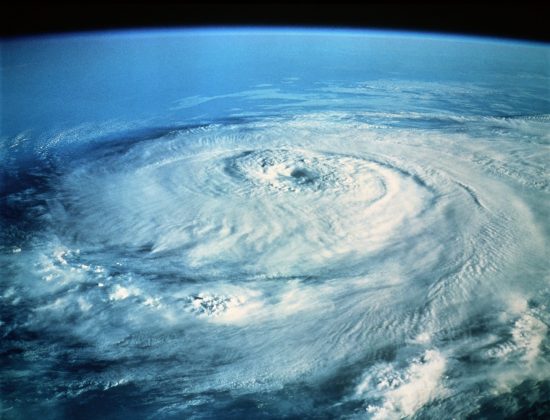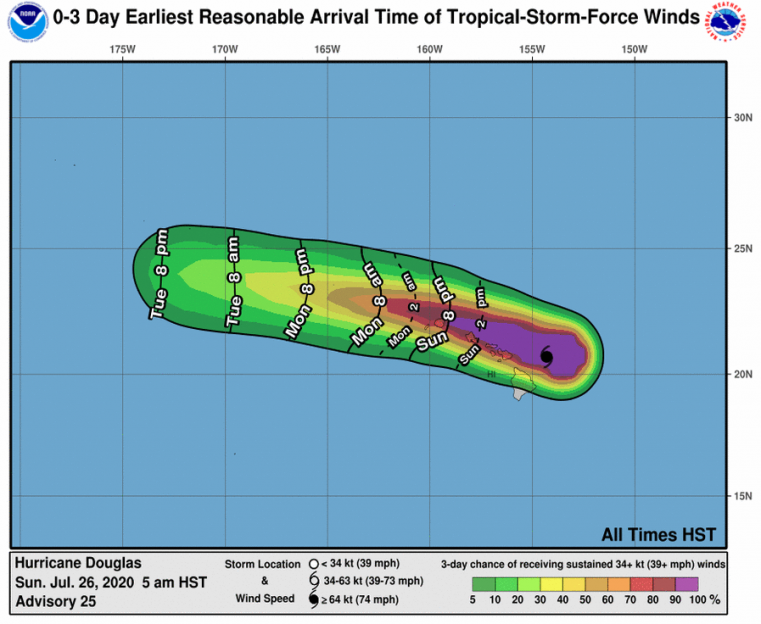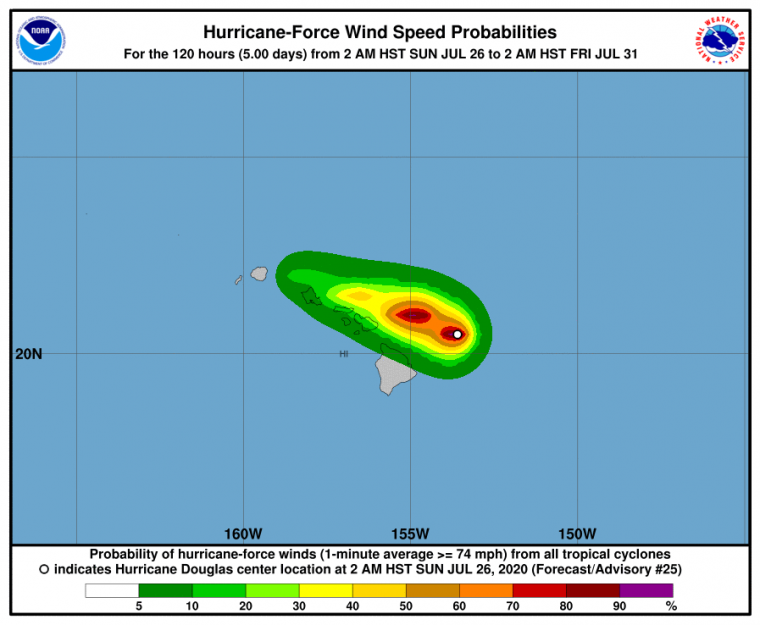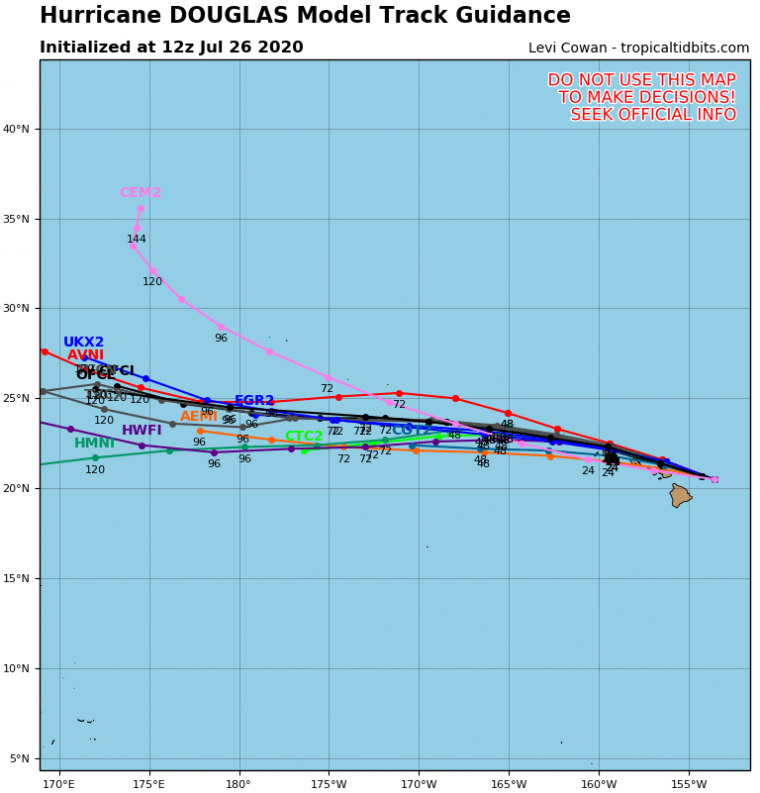

Hurricane Douglas poses an escalating threat for hurricane impacts to Hawaii over the coming 24 hours. Impacts of a category-1 hurricane are expected over the entire Hawaiian Islands together with heavy rainfall. In the meantime Tropical Storm Fay continues to weaken as it moves into northeastern Mexico. The threat of heavy rainfall and tropical storm conditions is ongoing over portions of southern Texas and northeastern Mexico. The discussion below follows statements of the U.S. National Hurricane Center (NHC) and the Central Pacific Hurricane Center (CPHC).

Hurricane Douglas Satellite Loop (Infrared). Source: TropicalTidbits.com. HURRICANE DOUGLAS Status – 2 PM EDT (18 UTC) (CPHC)
- Maximum Sustained Wind: 90 mph
- Minimum Central Pressure: 987 mb
- Motion: West-Northwest at 16 mph
- Location: About 185 miles east of Honolulu, Hawaii
- Extent of Hurricane-Force Winds from Center: 30 miles
- Extent of Tropical-Storm-Force Winds from Center: 105 miles
- Status: Category-1 Hurricane. Maintaining strength.
- Hurricane Douglas poses an escalating threat for hurricane impacts to the Hawaiian Islands. The outer bands of Douglas are now moving into the eastern Islands and conditions will deteriorate over the coming hours.
- Douglas has been able to retain its structure and strength despite moving over cooler waters and through an environment of increasing wind shear. As Douglas approaches the Islands it is moving over warmer waters. In the meantime the effects of southerly wind shear are now being offset by a building subtropical ridge to the north, which is also suppressing northward motion of the storm.
- Accounting for these factors, the CPHC best forecast takes the core of Douglas near or over the western Islands through tomorrow. The hurricane should lose strength but at a more gradual pace than suggested in recent days. On this basis, Douglas should cross the western Islands while retaining status as a category-1 hurricane.
- Expected impacts for the islands include winds of a category-1 hurricane, to bring downed trees and powerlines along with variable property damage. More considerable damage to property can be expected for those areas at higher elevation, or those that come near or within the core of the storm as it passes the islands. A sharp impacts gradient can be expected depending on the exact track of the core, and will be heavily influenced by any slight changes in the track.
- Heavy rainfall to produce freshwater flooding can also be expected as the storm passes the Islands. Rainfall amounts may be amplified in upslope regions.

Hurricane Douglas Position and Best Forecast (3-Days). Source: NOAA/CPHC.

Probability of Tropical-Storm-Force Winds and Earliest Reasonable Arrival Time. Source: NOAA/CPHC.

Probability of Hurricane-Force Winds. Source: NOAA/CPHC.

Hurricane Douglas Model Track Guidance. Source: TropicalTidbits.com. TROPICAL STORM HANNA Status – 2 PM EDT (18 UTC) (NHC)
- Maximum Sustained Wind: 40 mph
- Minimum Central Pressure: 1000 mb
- Motion: West-Southwest at 9 mph
- Location: about 10 miles north of Monterrey, Mexico
- Extent of Tropical-Storm-Force Winds from Center: 105 miles
- Status: Weak Tropical Storm
- After making landfall yesterday evening as a category-1 hurricane, Hanna has moved inland and weakened to a weak tropical storm due to land and topography interaction.
- Heavy rainfall and freshwater flooding remain a substantial threat for both southern Texas and northeastern Mexico.
- Tropical storm wind conditions along with the threat of tornadoes will continue to bring downed trees and powerlines along with the continued threat for some property damage over affected areas.
- Hanna should continue to weaken and eventually dissipate over the high terrain of the Mexico interior sometime tomorrow.

Tropical Storm Hanna Position and Best Forecast. Source: NOAA/NHC. Updates and Useful Links A CAT-i report is scheduled for publication next week on the GC Cat Resource Center. Email alerts for Weather Sentinel and CAT-i reports are available on a subscription basis at the GC Preference Center here. Daily, global tropical cyclone alerts are also available on a subscription basis here. U.S. National Hurricane Center U.S. Central Pacific Hurricane Center U.S. National Weather Service Official statements from the CPHC, NHC and U.S. National Weather Service, and those of emergency management agencies supersede this update, and should be closely monitored concerning matters of personal safety.